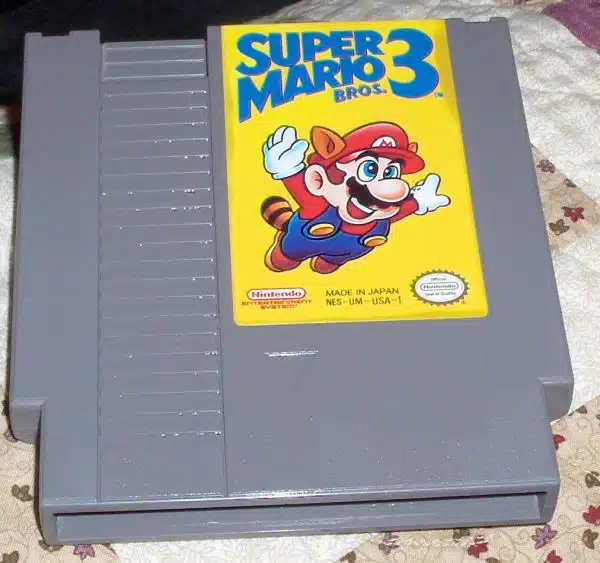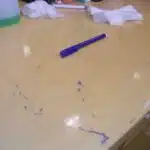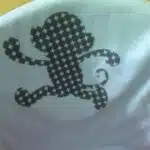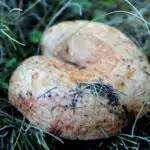As a professional house cleaner, I have had to deal with countless scenarios where permanent marker stains seem almost impossible to remove. These stains can be a nightmare for homeowners and renters alike, especially if they are on a surface that cannot be easily replaced or repainted. However, with the right tools and techniques, removing permanent marker stains can become a manageable task.
In this article, we will explore the most effective ways to remove permanent marker stains from various surfaces including fabric, walls, floors and furniture. We will also discuss some preventive measures that can help reduce the frequency of these types of stains. By following these guidelines, you can save yourself time and money by avoiding expensive replacements or repair costs while keeping your home looking clean and inviting.
Understanding The Nature Of Permanent Marker Stains
Permanent marker stains can be tough to remove, and it’s important to understand the nature of these stains before attempting to clean them. Permanent markers contain ink that is designed to adhere to surfaces and resist fading or smudging over time. This makes them a popular choice for labeling items, creating art projects, and more. However, when permanent marker gets on surfaces where it doesn’t belong, it can leave behind a stubborn stain that can be difficult to remove.
One effective cleaning technique for permanent marker stains is to use rubbing alcohol. The alcohol helps break down the ink and dissolve it, making it easier to wipe away. Another option is to use a specialized cleaner designed specifically for removing permanent marker stains. These cleaners are available at most hardware stores and online retailers, and they often work well on a variety of surfaces.
It’s important to note that some surfaces may be more sensitive than others when it comes to cleaning permanent marker stains. For example, certain types of fabrics or delicate materials may require special care in order to avoid damaging the surface while trying to remove the stain. By understanding the properties of permanent markers and utilizing effective cleaning techniques, you can successfully tackle these pesky stains and restore your surfaces back to their original condition. Moving forward, identifying the type of surface will help determine which cleaning method will yield the best results in removing permanent marker stains.
Identifying The Type Of Surface
Knowing the type of surface is crucial when it comes to removing permanent marker stains. The first step in identifying the type of surface is to determine whether it is porous or non-porous. Porous surfaces, like wood and fabric, absorb ink easily and can be challenging to clean. Non-porous surfaces, such as glass, metal, and plastic, are easier to clean as the ink tends to sit on top of the surface.
To differentiate surfaces for permanent marker stain removal, it is important to know the material types. For example, if you are dealing with a wood surface, you must consider the finish type as well. If it has a protective sealant or varnish coating, you should take extra care not to damage it during cleaning. Similarly, when dealing with fabrics like silk or woolens that require dry cleaning only or specific washing instructions must be followed.
When trying to remove permanent marker stains from any surface type or material, testing a small area first is essential. This helps avoid further damage and ensures that the cleaning method used is safe for both the surface and the cleaner. It also allows you to adjust your approach if needed before tackling larger areas of stubborn stains.
Testing A Small Area First
Before attempting to remove permanent marker stains, it is important to test a small area first. This is because different surfaces may react differently to various cleaning methods. To conduct a proper test, choose an inconspicuous area and apply the cleaning solution or method with caution.
There are several testing methods that can be used depending on the surface being treated. For example, when dealing with carpets, try using a white cloth dampened with water and blotting the area gently. If there is no color transfer onto the cloth or damage to the carpet fibers, proceed with the cleaning process. When working with hard surfaces like walls or floors, try applying a small amount of cleaner onto a non-visible area and check for any discoloration or damage before proceeding.
Precautionary measures should always be taken when testing a small area. Wearing rubber gloves and eye protection is highly recommended to prevent any possible allergic reactions or exposure to harmful chemicals. Additionally, ensure that the room is well-ventilated by opening windows or using fans to avoid inhaling any fumes from the cleaning solutions.
Transition: Once you’ve successfully tested a small area and determined that it’s safe to proceed, you can move on to using rubbing alcohol as an effective way of removing permanent marker stains.
Using Rubbing Alcohol
Rubbing alcohol is a great alternative for removing permanent marker stains. It effectively breaks down the ink and dissolves it, making it easier to wipe away. To use this method, you will need a cloth or cotton ball and rubbing alcohol.
Before using rubbing alcohol, it is important to take some safety precautions. Make sure you are working in a well-ventilated area as the fumes can be strong. Also, be careful not to use too much rubbing alcohol as it can damage certain surfaces such as wood or leather. Test on a small inconspicuous area first before proceeding with the stain.
To use rubbing alcohol, simply pour a small amount onto the cloth or cotton ball and gently rub onto the stained area. You may need to repeat this process several times until the stain has completely lifted. Once you have removed the stain, make sure to rinse the area with water and dry thoroughly.
Alternative methods for removing permanent marker stains include using vinegar, toothpaste or baking soda. These methods work differently depending on the surface of the stain and its severity. Experiment with different methods to find what works best for your specific situation. Remember to always test in an inconspicuous area before proceeding with any method to avoid causing further damage.
Trying Vinegar
Imagine a world where household items could magically make stains disappear. Unfortunately, we don’t live in that world. However, with the right tools and methods, even permanent marker stains can be removed from various surfaces. Vinegar is one such tool that has shown effectiveness in removing permanent marker stains.
Vinegar effectiveness lies in its acidic properties that break down the ink’s chemical structure, making it easier to remove. To use vinegar for removing permanent marker stains, mix equal parts of vinegar and water and apply the solution to the stain using a cloth or sponge. Gently rub on the stain until it fades away. Rinse with warm water and repeat if necessary.
While vinegar has proven effective in removing permanent marker stains, there are alternative solutions worth trying if vinegar doesn’t work or isn’t available. For instance, rubbing alcohol can be used instead of vinegar as its chemical structure is also effective in breaking down ink molecules. Additionally, baking soda mixed with water creates a paste that can be applied to the stain and left overnight before washing off with warm water. However, these alternatives may not work on all surfaces or fabrics; thus, caution must be taken when using them.
Transitioning into our next section about applying hydrogen peroxide, we’ll explore another method of removing permanent marker stains using an oxidizing agent’s power. Hydrogen peroxide breaks down the ink molecules by releasing oxygen atoms that attack the chromophores responsible for creating color pigments in markers’ ink. Let’s see how this method works!
Applying Hydrogen Peroxide
After trying vinegar, another effective solution for removing permanent marker stains is hydrogen peroxide. This powerful cleaning agent is commonly used in households and has numerous benefits when it comes to stain removal. Hydrogen peroxide quickly breaks down the pigment in the marker ink and lifts it from the surface of the affected area.
One of the key benefits of hydrogen peroxide is its ability to disinfect surfaces while removing stains. It is a natural antiseptic that kills bacteria and viruses, making it an ideal choice for cleaning heavily soiled areas. Additionally, this versatile solution can be used on a wide range of surfaces including walls, floors, furniture, and even clothing.
If you prefer not to use hydrogen peroxide as a stain remover, there are other alternatives available. Rubbing alcohol, nail polish remover, and even hand sanitizer can be effective in removing permanent marker stains. However, these alternatives may not offer the same level of disinfection as hydrogen peroxide. It’s important to test any new stain removal method on a small inconspicuous area before applying it to a larger surface.
Transition: Now that we’ve explored using vinegar and hydrogen peroxide for removing permanent marker stains let’s move onto another solution – using baking soda and toothpaste.
Using Baking Soda And Toothpaste
Did you know that baking soda is not just a versatile ingredient in your kitchen but also a powerful cleaning agent? According to a survey conducted by the Arm & Hammer company, 87% of Americans have baking soda at home, and more than half use it for cleaning purposes. Understanding the science behind it, baking soda’s alkaline nature reacts with acidic stains like permanent marker ink to neutralize them, making them easier to remove.
To use baking soda for removing permanent marker stains on various surfaces like walls, furniture, or clothes, you need to mix it with other household items such as toothpaste or vinegar. Toothpaste contains mild abrasives that can help scrub off the stain without damaging the surface underneath. On the other hand, vinegar’s acetic acid content acts as a natural solvent that dissolves stubborn marks.
When using this method, start by mixing some baking soda with toothpaste or vinegar until it forms a thick paste. Apply this mixture onto the stained area and let it sit for several minutes before wiping it off with a damp cloth. Repeat this process until the stain disappears completely. Remember to test this method on an inconspicuous area first to ensure that it does not cause any discoloration or damage.
Now that you have learned about using baking soda and toothpaste to remove permanent marker stains, another effective method is trying acetone or nail polish remover. These contain strong solvents like acetone that can dissolve ink pigments quickly. However, be cautious when using these items on delicate fabrics or surfaces as they may cause discoloration or damage if left on too long. Follow our subsequent section below to learn how to use acetone safely and effectively.
Trying Acetone Or Nail Polish Remover
Acetone or nail polish remover is a commonly used method to remove permanent marker stains. However, it is important to note that acetone can be harsh on some surfaces and may cause discoloration or damage. Here are some precautions to keep in mind when using acetone or nail polish remover:
- Always test the solution on an inconspicuous area first.
- Wear gloves to protect your skin from irritation.
- Work in a well-ventilated area to avoid inhaling fumes.
If you decide to use acetone or nail polish remover, here are the steps you can follow:
- Put a small amount of acetone or nail polish remover on a clean cloth or cotton ball.
- Gently rub the stained area with the cloth or cotton ball.
- Repeat as needed until the stain disappears.
Keep in mind that there are alternatives to using acetone or nail polish remover, such as rubbing alcohol or vinegar. These options may be gentler on certain surfaces and still effectively remove ink stains. It’s always best to test a small area first before applying any solution to the entire stain.
When using nail polish remover, make sure it contains acetone as non-acetone removers may not work effectively on permanent marker stains. Additionally, be sure to store the solution properly and keep it out of reach of children and pets.
Next, we will discuss another method for removing permanent marker stains using a magic eraser.
Using A Magic Eraser
- Magic Erasers are an effective and efficient method of removing permanent marker stains from a variety of surfaces.
- Before using a Magic Eraser, it is important to prepare the surface by dusting and wiping away any dirt or dust.
- To use a Magic Eraser, moisten the sponge with warm water and gently rub the stained area until the stain is removed.
- The advantage of using a Magic Eraser is that it is able to remove most permanent marker stains without harsh chemicals.
- Another advantage of using a Magic Eraser is that the sponge is able to reach into crevices and corners, making it a great tool for cleaning hard to reach areas.
- When using a Magic Eraser, it is important to be careful not to rub too hard, as this could cause further damage to the surface.
Pros Of Using A Magic Eraser
When it comes to removing permanent marker stains, a Magic Eraser can be a game changer. These versatile cleaning tools offer several benefits that make them a go-to solution for many homeowners. One of the primary benefits is their ability to remove stubborn stains without the need for harsh chemicals or excessive scrubbing. Magic Erasers are made from melamine foam, which is highly absorbent and effective at lifting dirt and grime from surfaces.
Another benefit of using a Magic Eraser is their versatility. They can be used on a wide range of surfaces, including walls, floors, countertops, and appliances. This makes them an ideal tool for tackling multiple cleaning tasks around the house. However, it’s important to note that while they are effective at removing stains, they do have some limitations. For example, they should not be used on delicate surfaces like leather or silk as they can cause damage.
Despite their limitations, the benefits of using a Magic Eraser make them an excellent choice for removing permanent marker stains. Whether you’re dealing with marks on walls or furniture, these cleaning tools offer a quick and easy solution that requires minimal effort on your part. By using a Magic Eraser in combination with other cleaning techniques like spot treating and blotting up excess ink, you can successfully eliminate even the most stubborn marker stains from your home.
Preparing The Surface
When using a Magic Eraser to remove permanent marker stains, it is crucial to prepare the surface beforehand. One of the essential steps in preparing the surface is to protect it from further damage. This can be done by covering any nearby areas that don’t need cleaning, like furniture or carpets, with protective sheets or towels. Doing this prevents any cleaning solutions from damaging surfaces that aren’t meant to be cleaned.
Another important aspect of preparing the surface is choosing the right cleaning solution. While Magic Erasers work well on their own, they can be even more effective when paired with an appropriate cleaner. Depending on the surface you’re working on, you may need a mild detergent or a specialized cleaning solution. It’s important to read labels and test any new products on small areas first to avoid causing further damage.
Lastly, always make sure that the surface is dry before using a Magic Eraser. Moisture can interfere with its effectiveness and cause damage if used incorrectly. After applying your chosen cleaner and letting it sit for a few minutes, use a clean cloth or paper towel to blot up any excess liquid before using the Magic Eraser. By taking these steps to prepare the surface properly, you’ll ensure that your Magic Eraser is as effective as possible in removing permanent marker stains without causing further damage in the process.
Removing The Stain
Understanding ink chemistry is crucial in effectively removing permanent marker stains using a Magic Eraser. Different types of ink have varying chemical compositions, and each requires a specific cleaning method to prevent further damage. For example, alcohol-based markers require rubbing alcohol or acetone as a cleaning solution, while water-based markers may only need mild soap and water.
Prevention techniques are also important in removing permanent marker stains with a Magic Eraser. The longer the stain sits on the surface, the more difficult it becomes to remove it completely. Therefore, it’s essential to act quickly when dealing with permanent marker stains. Additionally, keeping the surface clean and dry can help prevent permanent marker stains from settling in.
When using a Magic Eraser to remove permanent marker stains, start by applying gentle pressure while moving the eraser in circular motions over the stain. Avoid using too much force as this can cause damage to the surface. If necessary, apply more cleaning solution and repeat until the stain disappears completely. Once done, rinse the surface with water and pat dry with a clean cloth or paper towel. By following these steps carefully, you can effectively remove permanent marker stains without damaging your surfaces.
Applying Hairspray
Before using any cleaning method, it is important to test a small, inconspicuous area of the surface first to ensure that the method does not cause damage or discoloration. When using hairspray to remove permanent marker stains, there are certain safety precautions that must be taken. Hairspray contains chemicals that can be harmful if ingested or inhaled, so it is important to use the product in a well-ventilated area and avoid contact with skin and eyes.
To apply hairspray to a permanent marker stain, follow these steps:
| Steps | Instructions |
|---|---|
| 1 | Spray a small amount of hairspray directly onto the stain. |
| 2 | Allow the hairspray to sit on the stain for a few minutes. |
| 3 | Blot the stain gently with a clean cloth until it starts to lift. |
| 4 | Repeat steps 1-3 as necessary until the stain is completely removed. |
Alternative methods for removing permanent marker stains include using rubbing alcohol, vinegar, baking soda paste, or commercial cleaning products specifically designed for this purpose. However, it is important to note that some of these methods may not be suitable for all surfaces and may cause damage or discoloration if used improperly.
In conclusion, using hairspray can be an effective method for removing permanent marker stains from various surfaces. However, it is important to take proper safety precautions and test the method on a small area first before applying it more widely. If this method does not work or causes damage to the surface, there are alternative methods available that may better suit your needs. The next section will cover how to use WD-40 as another option for removing permanent marker stains.
Using Wd-40
According to a recent survey, permanent marker stains are one of the most difficult types of stains to remove from surfaces. This is because permanent markers contain a type of ink that sets into the material, making it almost impossible to remove with traditional cleaning methods. However, with the right solvents and techniques, it is possible to remove permanent marker stains effectively.
Using other solvents such as WD-40 can be effective in removing permanent marker stains. WD-40 is a versatile product that has many uses including removing tough stains like permanent markers. However, it is important to take precautions when using WD-40 as it can be flammable and should not be used near open flames or heat sources. It’s also important to test a small area first before applying it to larger areas.
When using WD-40, it’s essential that you follow the instructions on the label carefully. Make sure you apply the solvent directly onto the stain and let it sit for a few minutes before wiping it away with a clean cloth. If you’re unsure about using WD-40, consult with a professional cleaner who can give you advice on how best to use this product safely and effectively.
Trying white vinegar and lemon juice are other effective ways of removing permanent marker stains. These household staples have acidic properties that help break down the ink molecules in the stain. To use them, mix equal parts white vinegar or lemon juice with water and apply directly onto the stain. Let it sit for 10-15 minutes before wiping away with a clean cloth. With these solvents and techniques at hand, you’ll be able to successfully remove stubborn permanent marker stains from any surface!
Trying White Vinegar And Lemon Juice
Removing permanent marker stains with white vinegar requires mixing a solution of one part white vinegar and one part water, then applying it to the stain with a cloth or sponge. After letting it sit for a few minutes, the stain can be removed by scrubbing it with a brush or cloth. Removing permanent marker stains with lemon juice involves squeezing the juice of a lemon onto the stain and letting it sit for five minutes. The stain can then be scrubbed out using a cloth or brush. It is important to rinse the area after scrubbing to remove any residual lemon juice. Using both white vinegar and lemon juice can be an effective method for removing permanent marker stains. It is important to remember to test any cleaning solution on a small area of the stained surface to ensure it will not cause any damage. Once the stain has been removed, it is important to thoroughly rinse the surface with clean water to ensure all residue has been removed.
Removing With White Vinegar
If you’re dealing with permanent marker stains, white vinegar may be the solution you’re looking for. White vinegar is an effective cleaning agent that can help remove tough stains from various surfaces. One of the benefits of using white vinegar is that it’s a natural and affordable alternative to harsh chemicals. It’s also safe to use on most materials, including fabrics and carpets.
To remove permanent marker stains with white vinegar, start by mixing equal parts of water and white vinegar in a spray bottle. Spray the solution onto the stained area and let it sit for a few minutes. Then, blot the stain with a clean cloth or sponge until it starts to fade away. Repeat the process if needed until the stain is completely removed.
If you don’t have white vinegar on hand, there are other alternatives you can try for removing permanent marker stains. One option is to use rubbing alcohol or nail polish remover, both of which contain solvents that can dissolve ink stains. However, these substances can be harsh on some surfaces and may cause discoloration or damage if not used carefully. Another alternative is lemon juice, which has acidic properties that can break down ink pigments. Simply squeeze fresh lemon juice onto the stain and let it sit for a few minutes before rinsing with water.
Removing With Lemon Juice
Transition: In addition to using white vinegar, another natural cleaning solution that can be used to remove permanent marker stains is lemon juice. As a professional house cleaner, I often recommend using natural and affordable alternatives to harsh chemicals for various household cleaning tasks. Using lemon juice for other household cleaning tasks can also provide numerous benefits.
Lemon juice has acidic properties that make it effective in breaking down ink pigments from permanent markers. To use lemon juice for removing permanent marker stains, simply squeeze fresh lemon juice onto the stained area and let it sit for a few minutes before rinsing with water. This method is safe to use on most materials and is an affordable alternative to harsh chemicals.
Using natural cleaning solutions like white vinegar and lemon juice not only provides an affordable option but also offers numerous benefits. These natural substances are free from harsh chemicals that may cause harm to our health or the environment. Additionally, they are versatile and can be used for various household cleaning tasks such as removing stains, disinfecting surfaces, and deodorizing spaces. It’s important to have these natural alternatives readily available at home for effective stain removal without causing any damage or discoloration.
Conclusion: In conclusion, trying white vinegar and lemon juice are two effective methods for removing permanent marker stains. They’re both safe to use on most materials and are affordable alternatives to harsh chemicals. By incorporating these natural cleaning solutions into our cleaning routine, we can not only keep our homes clean but also promote a healthier living environment.
Using A Steam Cleaner
Steam cleaners are a versatile cleaning tool that can be used for various cleaning tasks around the house. They use hot steam to clean and sanitize surfaces, making it an effective way to remove stubborn stains like permanent marker stains from various surfaces. However, before using a steam cleaner on any surface, it is essential to check the manufacturer’s instructions for compatibility.
One of the benefits of using steam cleaners is that they do not require any additional chemicals or cleaning agents. It makes them eco-friendly and safe for children and pets. Moreover, steam cleaners are an excellent investment for those who want to deep clean their homes regularly. But one of the drawbacks of using steam cleaners is that some surfaces may not be compatible with high temperatures, which can cause damage.
In conclusion, using a steam cleaner is an effective way to remove permanent marker stains from different surfaces without using harsh chemicals or cleaning agents. However, it is crucial to follow the manufacturer’s instructions and test it on a small area first before using it on larger surfaces. In the next section, we will discuss preventive measures that can help you avoid permanent marker stains altogether.
Preventing Permanent Marker Stains
Preventive measures are key to avoiding permanent marker stains. Just like how a watchman prevents intruders from breaking into a house, preventive measures act as the first line of defense against these stubborn stains. Implementing these measures is like locking the doors and windows before leaving for vacation, ensuring that your home is safe from harm.
To prevent permanent marker stains, here are three simple steps you can take:
Store markers properly: Keeping markers in an upright position with their caps tightly secured can prevent ink from leaking and staining surfaces.
Use alternatives: Instead of using permanent markers, opt for washable markers or dry-erase markers to avoid leaving behind permanent marks.
Act fast: If you do accidentally get permanent marker on a surface, don’t wait to clean it up. The longer you let it sit, the more difficult it will be to remove.
Common mistakes people make when dealing with permanent marker stains include using harsh chemicals or scrubbing too hard, which can damage surfaces and make the stain worse. As a professional house cleaner, I recommend using gentle cleaning solutions and a light touch when trying to remove these stains.
Remember that prevention is always better than cure when it comes to permanent marker stains. However, if all else fails and you find yourself unable to remove a stubborn stain, seeking professional help may be necessary.
Seeking Professional Help When Needed
Professional guidance can be incredibly valuable when dealing with tough stains like permanent marker. If DIY methods have failed to remove the stain, it may be time to seek professional help. A trained and experienced cleaning professional will have access to specialized equipment and cleaning agents that can effectively remove even the most stubborn stains.
When seeking professional help for a permanent marker stain, it is important to do your research and choose a reputable service provider. Look for companies that have experience dealing with similar stains and read reviews from previous customers. Additionally, ask about the specific techniques and products they use to ensure they are safe for your surfaces and effective at removing the stain.
While some may prefer to tackle tough stains on their own, there are times when seeking professional guidance is the best option. By working with an experienced cleaning professional, you can save time, money, and frustration while ensuring your surfaces are properly cared for. Don’t hesitate to reach out for help when needed – sometimes it’s the best decision you can make.
Conclusion
Permanent marker stains can be a nightmare to remove from surfaces such as walls, floors, and furniture. It is essential to understand the nature of the stains before attempting to remove them. Identifying the type of surface and testing a small area first is crucial to avoid further damage.
One interesting statistic is that according to a survey conducted by Sharpie, 91% of adults have experienced accidental permanent marker stains at least once in their lifetime. This shows that it is a common problem faced by many individuals.
To effectively remove permanent marker stains, one can try using rubbing alcohol, vinegar, or a steam cleaner. It is important to follow the correct method for each surface and avoid harsh chemicals that may cause damage. Prevention is also key, such as using washable markers or keeping permanent markers away from children.
In conclusion, removing permanent marker stains requires patience and careful consideration of the surface and cleaning method. Seeking professional help when needed can prevent further damage and save time and effort. By following these tips and tricks, individuals can successfully eliminate permanent marker stains from various surfaces in their homes or workplaces.
Image Credits
- “Super Mario Bros 3 with permanent marker erased!” by Plat (featured)





























